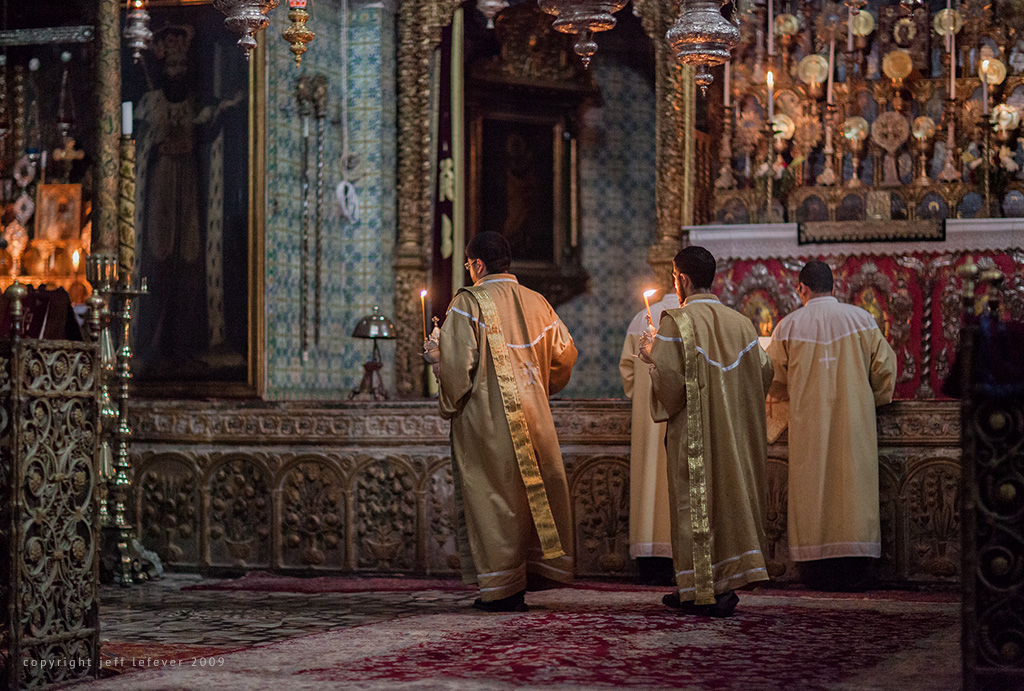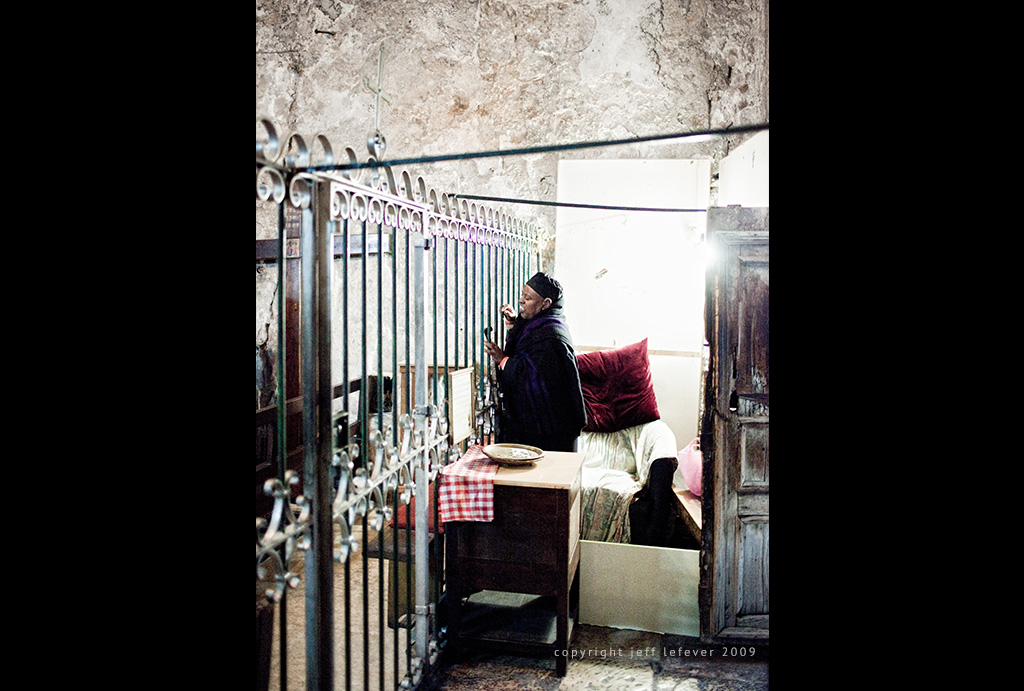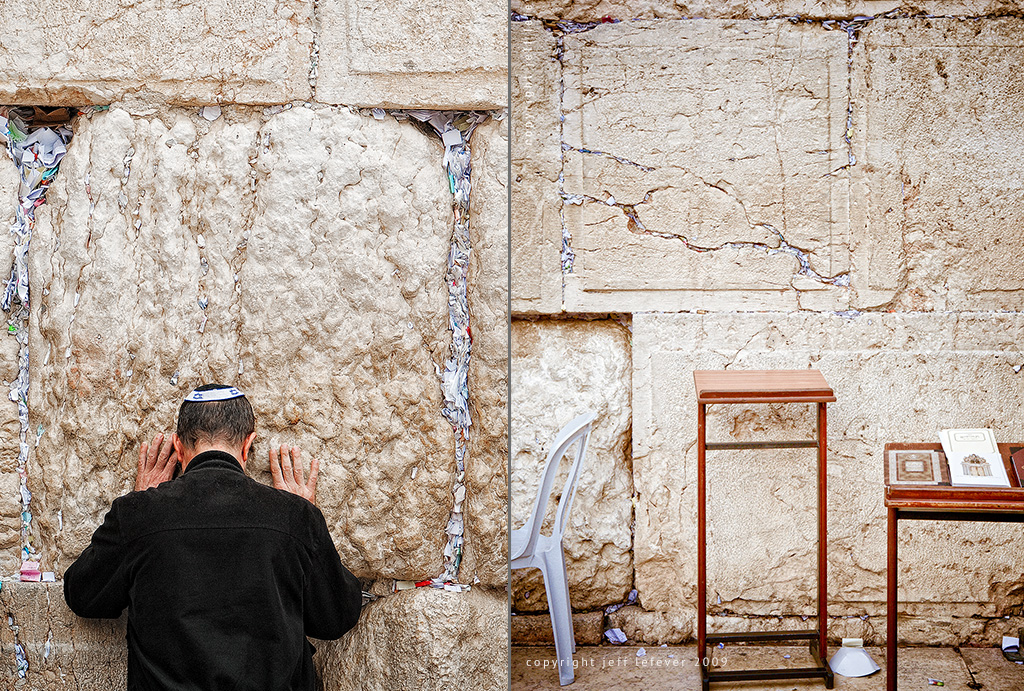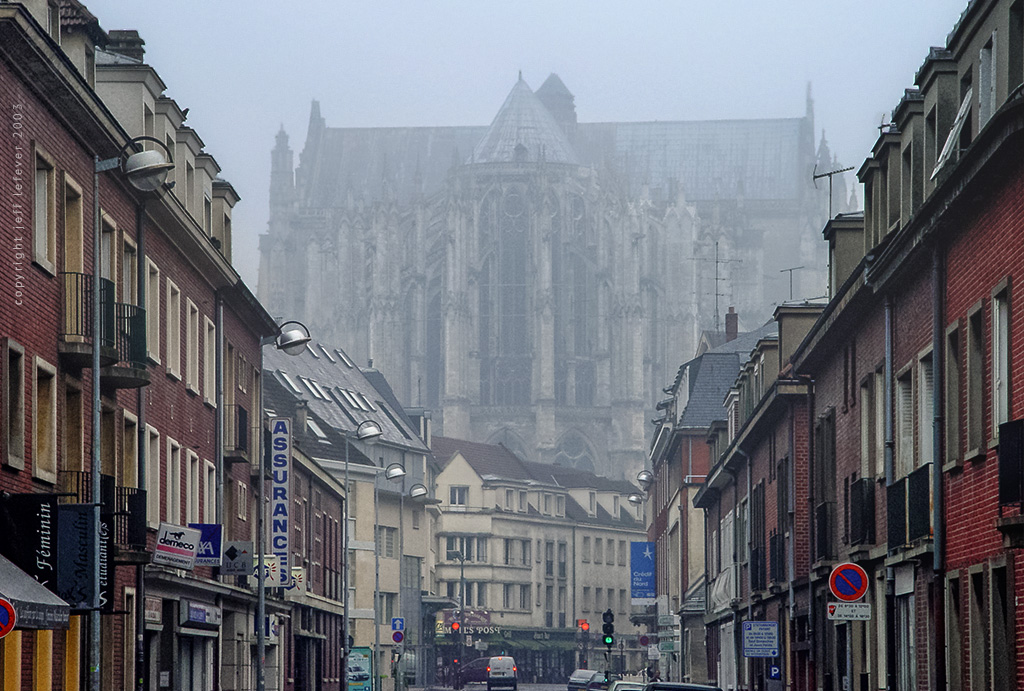On Consecration ~
St. James Cathedral of the Armenian Patriarchate in Jerusalem is one of the oldest Christian churches in Jerusalem. I have been there three times, twice with permission from Bishop Sevon to photograph.
St. James is open only for the morning, afternoon, and special occasion masses. It is closed to tourists. (Though anyone is allowed in to observe mass, the cathedral closes again promptly ten minutes after the mass ends.) It is consecrated.
Bishop Sevon held my hand and gripped my arm as we stood in front of the St. James altar. He gave me a lesson on consecration through the story of James.
Because Mary was a virgin, James was not the blood brother of Jesus the Messiah, the bishop told me, but only a “brother” in terms of association – like in a fraternity, or order, or a nationality. It is the way the Jews–or Christians–welcome one another once they determine that they are of the same faith. Our brotherhood is in the embodiment, but not by direct generational blood ancestry. And for the Jews, that blood ancestry is vital in the “One Jew Soul.”
Going on about Mary, Bishop Sevon made the analogy that one would not take a Holy Chalice and fill it with common drink, or a plate that was consecrated and use it for everyday common meals. So, too, it is with Mary, the vessel that held the Divine, through whom He entered this world.
The dictionary says that “to consecrate” is “to make or declare sacred; set apart or dedicate to the service of a deity: to consecrate a new church building.”
St. James is a consecrated space. As I observed the masses I noticed the rich and specialized singing, prayer, and ritual that prepared the Holy Eucharist. The attention given to everything showed the congregants’ intention of consecration and veneration. This is a place that is respected and taken seriously, not for the value of the things, but because of what these things represent in the Holy.
Much as icons serve as doorways through which one enters divine space by contemplation or substitution, so too are these actions – not because the ritual or objects are sacred in themselves, but because they are representative to something bigger and beyond – something which the ordinary cannot quite express.
The Jerusalem Hasidic rabbis I talked to keep the law, I was told, in order to gratefully obey God, to delight God. As one rabbi put it, “We get to do Mitzvahs!” Their actions are as a joy to one’s lover, as a kiss to the Holy One, knowing it is pleasing and delightful to God, our love.
The act of taking a thing or space and consecrating it is much like taking one’s life and giving it over to God. We choose to set our lives aside for the divine purpose. It is an act of intention. And by making it such, it becomes such.
Jesus said to “be in the world but not of it,” and I think that a consecrated thing can be in the world but is no longer of it. It cannot contain the world’s ways without being corrupted.
So the rituals I witness are a purification to enter again into the holy as vessels, being cleansed with proper mind and heart. Like the Jews say of mitzvahs, we get to be purified so we can be with our lover.
My friends in evangelical circles might scoff at all this orthodox theology, but in a different fashion, worship music exists to “get the heart prepared to receive the message.”
The mass at St. James will continue to resonate with me through the images I captured as I reflect on Bishop Sevon’s words at the altar.
~JWL



